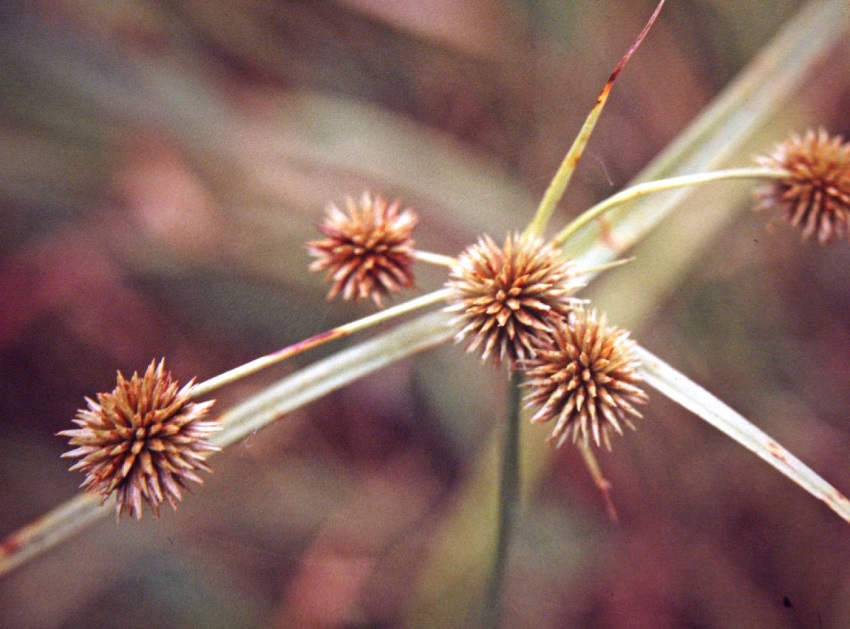
Grass burrs, also known as sticker burrs or sand spurs, are a common nuisance for homeowners and gardeners. These pesky plants can invade lawns, fields, and gardens, causing discomfort and frustration. The sharp, spiky seeds of grass burrs can stick to clothing, fur, and even skin, making them difficult to remove. If you’re wondering what eats grass burrs and can help control their population, you’re in the right place. In this article, we will explore the natural predators and methods that can help manage grass burrs in your environment.
Understanding Grass Burrs
Before we dive into the discussion on what eats grass burrs, let’s first understand what they are. Grass burrs are a type of weed belonging to the genus Cenchrus, which includes several species commonly found in North America. They thrive in warm climates and sandy soils, making them particularly problematic in southern regions. Grass burrs produce seeds that are encased in spiky burs, which serve as a protective mechanism to aid in their dispersal. If you have ever walked through a field or pasture infested with stickers grass, you know how painful it can be when these burrs get stuck in your clothing or socks.
The Nuisance of Grass Burrs
Grass burrs can be a significant nuisance for several reasons. First and foremost, the spiny burrs can attach themselves to clothing, fur, or shoes, causing discomfort and making it difficult to remove them. Additionally, these pesky plants can quickly take over lawns and gardens, crowding out desired grasses and plants. Their ability to rapidly reproduce and spread makes them a challenging weed to control.
Natural Predators of Grass Burrs
While grass burrs can be difficult to eradicate completely, several natural predators can help manage their population. These predators either consume the seeds or graze on the plants themselves, reducing the number of grass burrs in an area.
1. Livestock
Grazing animals such as cattle, sheep, and goats can play a crucial role in controlling grass burrs. These animals consume the plants while grazing, preventing them from producing seeds and spreading further. If you have a large pasture or field infested with grass burrs, introducing livestock can help keep their population in check. However, it’s important to ensure proper management and rotation of the animals to prevent overgrazing.
2. Birds
Birds, particularly ground-feeding species such as quails and turkeys, can be effective in reducing the number of grass burrs in an area. These birds feed on the seeds of grass burrs, helping to prevent their spread. Creating a bird-friendly habitat with shrubs, trees, and water sources can attract these natural seed predators to your property.
3. Insects
Several insect species feed on grass burrs and can help control their population. One notable insect is the grassbur seed weevil (Eubulus sp.), which specifically targets grass burrs. The adults lay eggs in the seed heads of grass burrs, and the larvae consume the developing seeds. This natural biological control can significantly reduce the number of viable seeds produced by grass burr plants. However, it’s important to note that introducing insect predators may require careful consideration and monitoring to prevent unintended consequences and potential ecological disruptions.
Methods to Control Grass Burrs
In addition to natural predators, several methods can be employed to control grass burrs and prevent their proliferation in your environment. Here are some effective strategies:
1. Hand Pulling or Mowing
For small infestations, manually pulling the grass burr plants or mowing them before they produce seeds can help prevent their spread. It’s crucial to remove the plants before the burs become mature and release their spiky seeds.
2. Herbicides
Selective herbicides can effectively control grass burrs without harming desired vegetation. Pre-emergent herbicides, applied before the grass burr plants sprout, can prevent their establishment. Post-emergent herbicides can be used to target already established plants. It’s essential to follow the instructions provided by the manufacturers and use herbicides in a responsible and environmentally conscious manner.
3. Lawn Maintenance
Proper lawn maintenance practices, such as regular mowing and adequate watering, can help discourage the growth of grass burrs. Maintaining a healthy and dense lawn with desirable grass species can reduce the available space and resources for invasive weeds like grass burrs to thrive.
4. Soil Improvement
Grass burrs tend to thrive in sandy soils. Improving the soil structure and fertility can make it less favorable for these plants to establish and spread. Regularly adding organic matter, such as compost, can enhance soil health and make it more resistant to grass burr infestations.
Conclusion
While grass burrs can be a persistent nuisance, there are natural predators and management strategies that can help control their population. Livestock, birds, and insects play a vital role in keeping grass burrs in check by consuming the seeds or grazing on the plants. Additionally, methods such as hand pulling, mowing, herbicide application, lawn maintenance, and soil improvement can contribute to reducing the spread of grass burrs. By implementing these strategies and understanding the biology and life cycle of grass burrs, you can effectively manage these unwanted plants in your environment.
FAQs (Frequently Asked Questions)
- Can grass burrs harm humans or animals?
The spiky burrs of grass burrs can attach to clothing, fur, or shoes, causing discomfort and irritation. However, they are not considered harmful to humans or animals beyond their nuisance value.
- Can pets bring grass burrs into the house?
Pets, particularly dogs with long fur, can inadvertently carry grass burrs into the house if they come into contact with the plants. Regular grooming and checking for any burrs or seeds can help prevent this from happening.
- Can grass burrs be completely eradicated?
While complete eradication of grass burrs may be challenging, their population can be effectively managed through the methods mentioned in this article. Consistent control efforts and a combination of strategies can keep their numbers in check and prevent their spread.
- How long do grass burr seeds remain viable?
Grass burr seeds can remain viable in the soil for several years, making them persistent weeds. This highlights the importance of ongoing management and prevention measures to avoid future infestations.
- Can mulching help control grass burrs?
Applying a layer of organic mulch around desirable plants can help suppress the growth of grass burrs by depriving them of light and resources. However, the mulch should be properly maintained and regularly inspected for any grass burr seedlings that may have sprouted.
Remember, effective control of grass burrs requires consistent efforts, and it’s important to tailor your approach based on the severity of the infestation and specific conditions of your environment. By adopting a combination of natural predators, management strategies, and preventive measures, you can successfully combat the spread of grass burrs and restore the beauty of your landscape.
